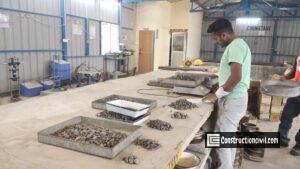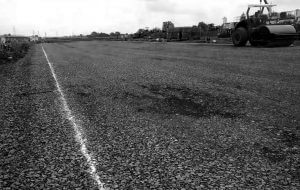What is Road Subgrade?
The foundation of the pavement structure is known as subgrade. Preparation of subgrade consists of all operations before the pavement structure is placed over it and compacted. The subgrade may be situated on an embankment, by excavation, or at the existing ground surface. In all the above cases, Site Clearance Clearing Grubbing Operation should be done before starting the pavement structure construction. After that, the grading operation is started as per the design and drawing of the highway plan and profile. Subgrade performance depends on two corresponding factors, which are as follows.
- Load bearing capacity: Compaction, moisture content, and soil type usually affect subgrade load bearing capacity.
- Volume changes: When exposed to excessive moisture or freezing conditions, most soils undergo volume changes, affecting subgrade performance.
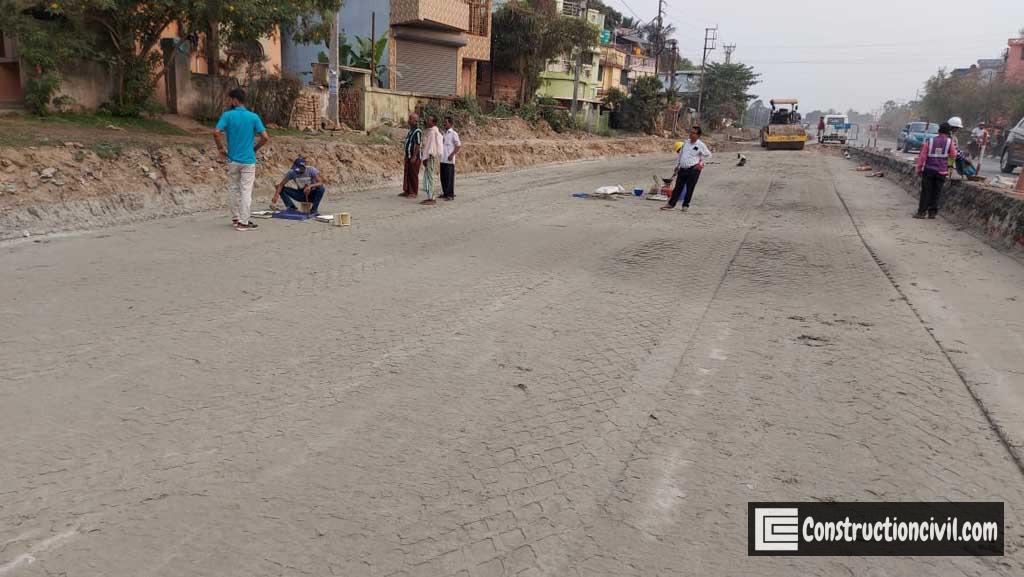
Also, Read: Embankment Meaning – Construction – Quality Control
Construction Equipment:
The following sets of equipment are necessary for the planned progress of road subgrade construction work.
- Excavator
- Air Compressor & Pavement Breaker /Jack Hammer
- Tippers /Dumpers
- Motor Graders
- Vibratory Compactor
- Tractors Dozer with Disc Harrows/Spreading Blade/Ploughs
- Water Bowser with Sprinklers etc.
- Crawler Dozers
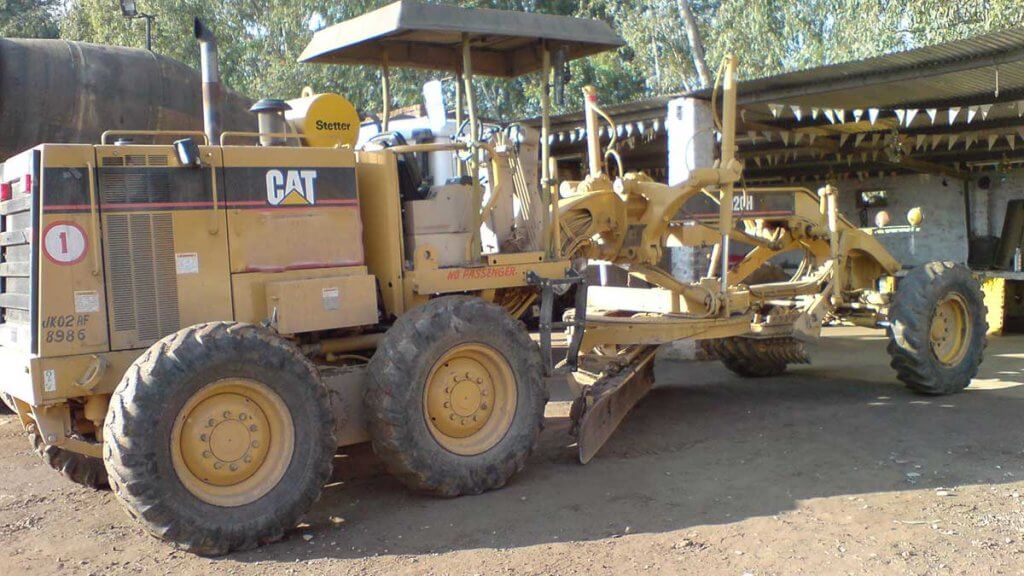
Also, Read: Granular Sub Base Construction and Quality Control
Subgrade Construction Process:
- The subgrade in road construction shall be prepared as per the MORTH specifications if it is not mentioned in the construction contract technical specifications.
- The limits of filling shall be marked by fixing batter pegs at regular intervals on both sides of the layer, and the working line should be marked with lime powder.
- The layer should be built 300mm wider than the designed and drawing dimensions so that after proper compaction is achieved up to the toe, the surplus materials shall be trimmed to get the properly compacted slopes of the subgrade.
- Where the fill is to be deposited against an existing subgrade, continuous horizontal benches of 300 mm wide shall be cut into the old slope.
- In the cutting section, where cutting is to be done up to the subgrade top, its top layer shall be loosened and re-compacted as per technical specification.
- The topsoil in the borrow area shall be removed by grubbing or stripping so that earth without vegetation is excavated and loaded for the subgrade layer.
- Soil from approved borrow areas shall be excavated with Excavators and loaded onto tippers or dumpers for transportation to the stretch ready to receive fill Material.
- The material shall be dumped between the limiting lines marked with lime powder.
- The material shall be spread in layers of a uniform thickness not exceeding 250mm of compacted thickness. A grader or a combination of dozer and grader can be used for this activity.
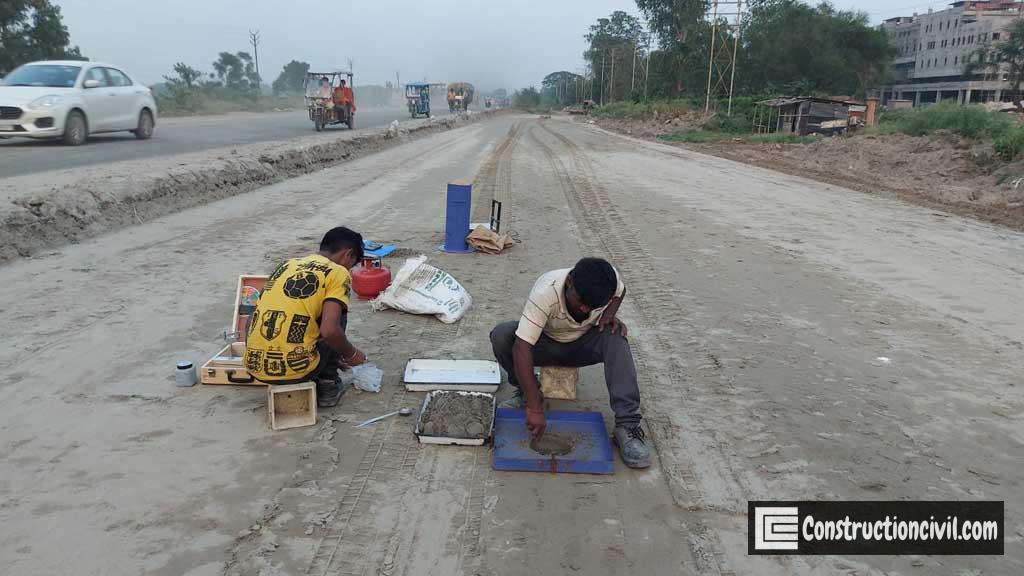
Also, Read: Wet Mix Macadam Construction and Quality Control
- The grader will initially spread the heap of earth dumped over a stretch maintaining an approximate line and level.
- The material should have an Optimum Moisture Content(OMC) at this stage, ranging from +1% to –2%.
- The mixing or drying process should be adopted if OMC is not found within the permissible limit.
- When the material at the site is too Dry: Additional water shall be added to increase the moisture content up to the permitted limit. After sprinkling water with the browser, the material shall be thoroughly mixed with the help of a grader to obtain a homogenous mix. After that, the grader shall carry out the final precise grading.
- When the material at the site is too Wet: If the material at the site is too wet, it shall be dried by aeration and exposure to the sun until the moisture content is acceptable.
- When a combination of grader and dozer is used, the dozer shall carry out the initial spreading of borrowed material to the approximate line and level. After that, the grader shall carry out the final precise grading.
- The in-situ moisture content shall be checked with the help of a rapid moisture meter.
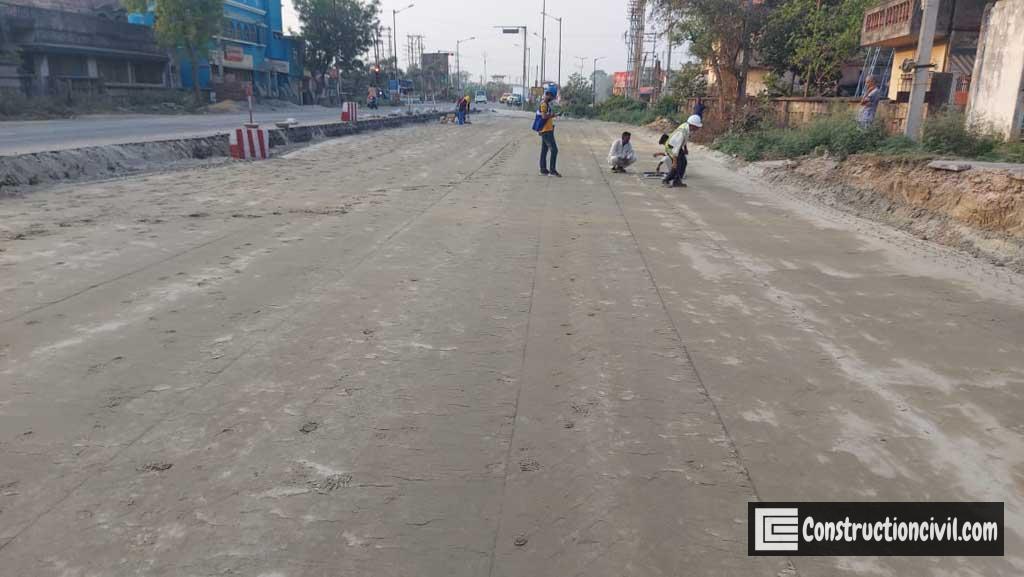
Also, Read: Dense Bituminous Macadam (DBM) Construction Requirements
- Compaction of fill shall start immediately after achieving the required moisture content, and compaction shall be done with the help of a vibratory compactor.
- The compaction pattern, which includes the number of passes required, shall be finalized after full-scale trials at the site to achieve the required degree of compaction as per technical specifications.
- The general pattern shall be as follows: When one pass includes both forward and reversed roller movement.
- Initial rolling: Two static passes with a vibratory roller.
- Subsequent rolling: Four vibratory passes
- The compaction shall commence from the lower end and move to the upper-end width by width.
- Further layer shall commence after the underlying layer is tested and approved.
- The rain cuts shall be repaired before placing further layers of subgrade.
- The compaction behind the structure shall be done using a vibratory roller or plate compactor to achieve 98% of MDD as per MORTH specification.
- The surface of the subgrade layer shall have a suitable cross fall to enable efficient surface drainage.
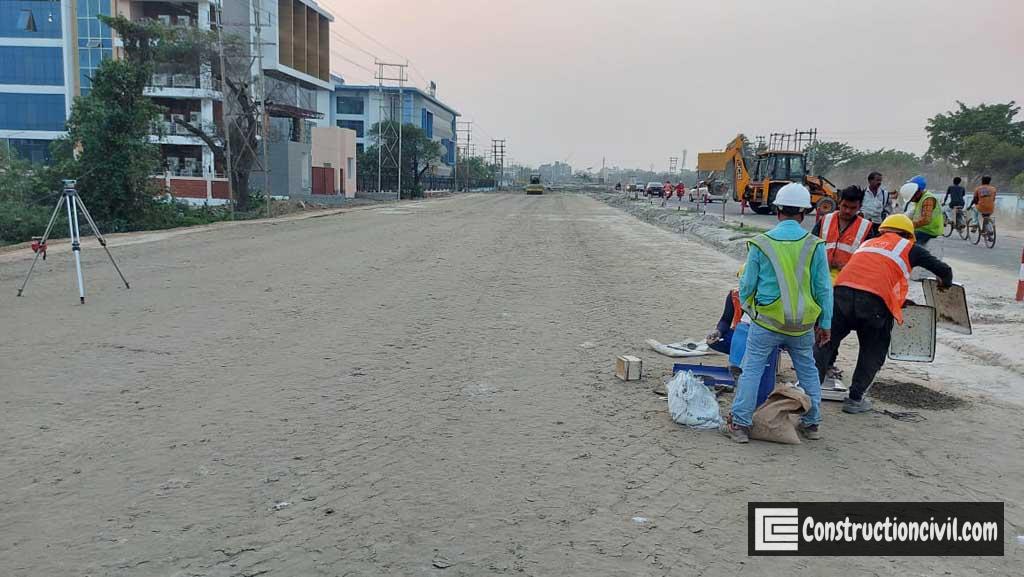
Also, Read: Construction of Mastic Asphalt for Roads and bridges
Quality Control:
- The poor soil should be avoided if possible, but when it is required to build over weak soils, several techniques are used to improve subgrade performance, as follows.
- Remove poor soil and replace it with higher quality fill material.
- Soil stabilization using admixtures can increase subgrade stiffness and reduce swelling tendencies of soil.
- Additional base layers can help to spread pavement loads over a larger subgrade area.
- Required maximum laboratory dry unit weight when tested as per IS:2720 (Part 8), and it should not be less than 18 kN/cum
- Relative compaction as a percentage of maximum laboratory dry density as per IS:2720 (Part 8) is not less than 98%.
- Construction of subgrade with approved material satisfying a minimum CBR of 5% should be followed.
Also, Read: Site Clearance – Clearing and Grubbing for Highway Construction




